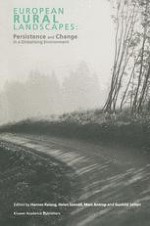2004 | OriginalPaper | Buchkapitel
The Future Role of Agriculture in Rural Communities
Case Studies in Estonia and Lithuania
verfasst von : Mette Bech Sørensen
Erschienen in: European Rural Landscapes: Persistence and Change in a Globalising Environment
Verlag: Springer Netherlands
Enthalten in: Professional Book Archive
Aktivieren Sie unsere intelligente Suche, um passende Fachinhalte oder Patente zu finden.
Wählen Sie Textabschnitte aus um mit Künstlicher Intelligenz passenden Patente zu finden. powered by
Markieren Sie Textabschnitte, um KI-gestützt weitere passende Inhalte zu finden. powered by
The political and economic transformation that started in the early 1990s has had an important impact on the rural landscapes of Central and Eastern Europe. As a consequence of the radical changes that occurred in the agricultural sector — with the introduction of a market economy, a new ownership structure, and a reorientation of agricultural policy — much land has been taken out of production. Estonian studies (Peterson & Aunap 1998; Mander et al. 2000; Reiljan & Kulu 2002) reveal significant increases in the amount of abandoned land, and decreases of approximately 25 percent in the quantity of arable land. In Lithuania, it is estimated that 10 percent of the agricultural land has been abandoned (MoA 2000). the large-scale collective and state farm structure collapsed and privately-owned entities emerged in the beginning of the 1990s (MoA 2002a). the immediate results were a significant decline in gross agricultural output, and trade deficits in agricultural products. In the Baltic countries, possibilities for employment in rural areas have decreased (Bezemer et al. 2003a) — for example, the number of jobs offered in the rural areas of Estonia has fallen by about 25 percent (Reiljan & Kulu 2002). the collapse of large-scale agricultural production and food processing has not only decreased employment, it has also left the rural areas with inadequate infrastructure — and not very well-adjusted to the emergence of a small-scale farming structure.
